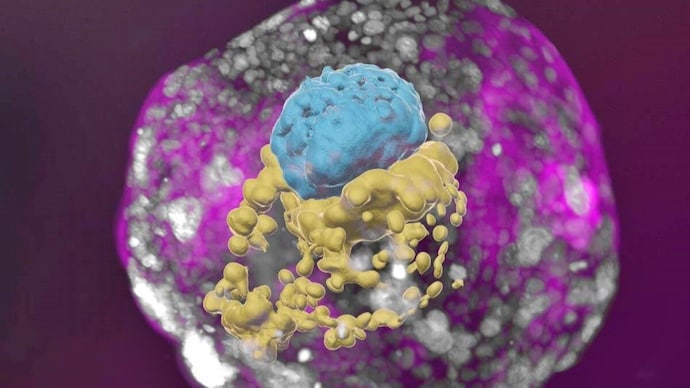Scientists create human embryo in lab without eggs, sperm
The models accurately emulated embryonic development in its earliest stages - a process still poorly understood due to ethical constraints on real embryo research.

In Short
- Te synthetic models contained structures
- The naive stem cells were separated into three groups
- The breakthrough is reported in the journal Nature
In a scientific first, researchers at Israel's Weizmann Institute of Science have successfully created synthetic models of 14-day-old human embryos derived entirely from stem cells grown in a lab.
The breakthrough, reported in the journal Nature, provides an unprecedented glimpse into the mysterious earliest stages of human development and could open up new avenues of research into infertility, birth defects, and organ growth.
Led by molecular biologist Professor Jacob Hanna, the Weizmann team started with two types of stem cells - those reprogrammed from adult skin cells and others derived from established lab-grown stem cell lines.
Using a specialised technique developed by Hanna in 2013, they reverted the cells to an earlier, more flexible “naive” state resembling a 7-day-old embryo ready for implantation.
The naive stem cells were separated into three groups - embryo, yolk sac and placenta - and treated with chemicals to nudge them towards their respective fates. When combined in optimized conditions, around 1% self-organized into sphere-shaped synthetic embryos exhibiting the complex architecture of a 14-day-old human embryo.
Crucially, these synthetic models contained structures previous stem cell-derived aggregates lacked, including the placenta, yolk sac, chorionic sac and hormone-producing cells.
Under the microscope, their internal organization matched human embryo diagrams, convincing the researchers their 14-day milestone had been authentically reached.
According to Hanna, the first month marks a critical yet little understood period when the implanted cell clump becomes a structured embryo containing every organ. “Our stem cell-derived model offers an ethical route to study this ‘black box’ phase by closely mimicking natural development.”
Already, his team has gleaned new insights into early pregnancy loss by observing developmental abnormalities when embryos were improperly enveloped. Further research using the accurate models could uncover causes of infertility and birth defects, aid drug safety tests, and boost efforts to grow transplantable tissues and organs.
By ethically avoiding the use of fertilized eggs, Hanna’s synthetic embryos enable human development to be scientifically investigated beyond the 14-day legal limit. “This breakthrough opens up new possibilities,” he said. “Our models will help reveal the complex forces driving early embryonic growth.”
